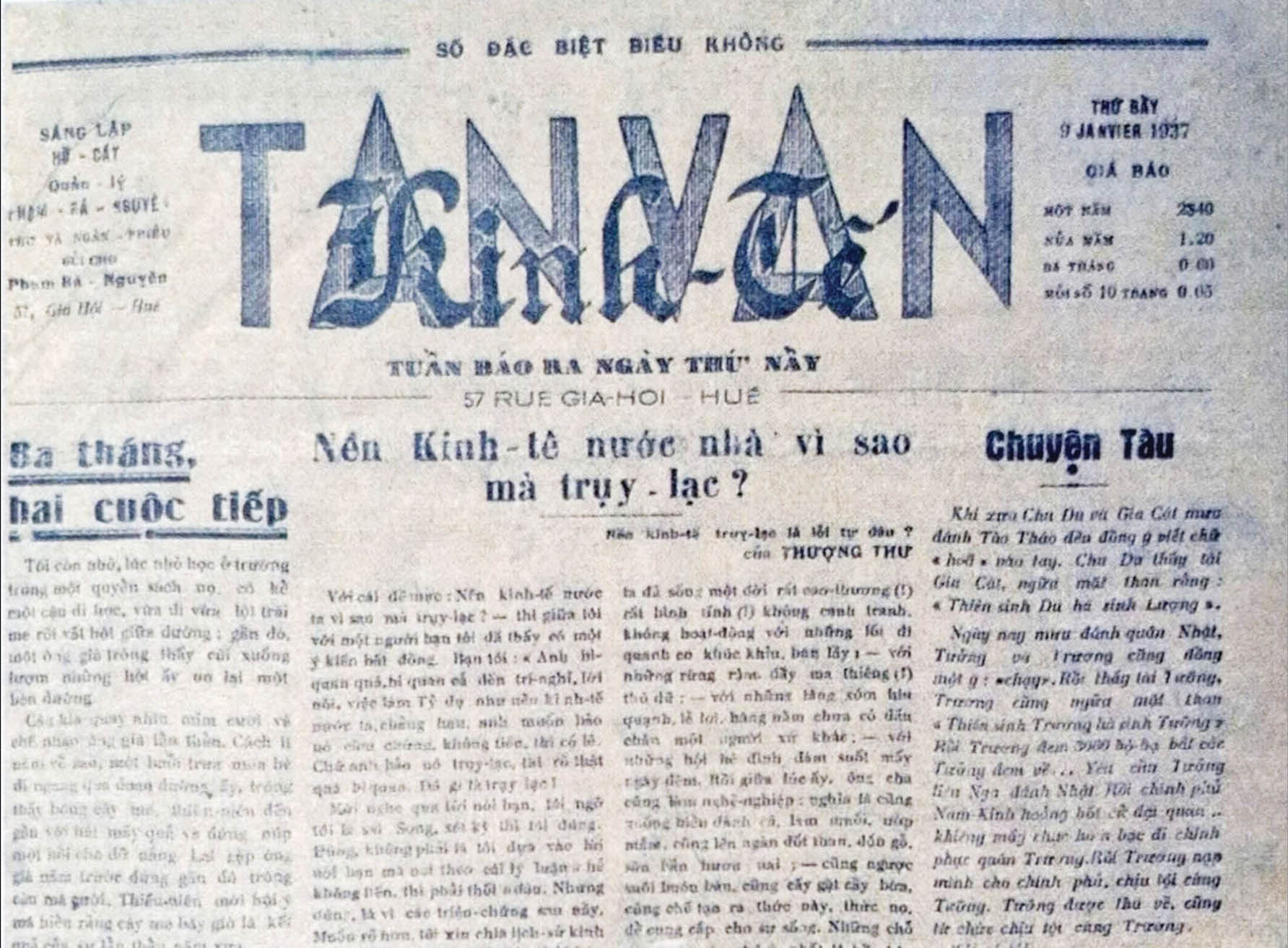 |
| Documentary image of the cover of a special issue of Kinh te Tan Van |
The most typical was the beginning of the period of the Indochinese Democratic Front (1936-1939), when the Communist Party advocated that at all costs there must be a press to use for legal struggle. The Central Committee of the Communist Party directed: “Party committees at all levels must encourage sympathizers to apply to the government (protectorate) for permission to publish public newspapers. Each party cell must establish a “Popular Public Library” or an equivalent agency to purchase public books and newspapers for research purposes.”
The communists in Hue and Central Vietnam flexibly implemented this policy of the Party, finding ways to have their “trusted” people stand up to ask for permission from the authorities to publish some newspapers. One Party member applied for permission to publish the weekly Nhanh Lua, others applied for permission to publish the weekly Kinh Te Tan Van, and later, when things became more difficult, they found ways to buy the literary newspaper Song Huong from scholar Phan Khoi to facilitate their operations. On the surface, each group’s newspaper was independent according to different criteria, but inside, they had the same purpose and direction, all under the unified direction of the Party. Therefore, when Nhanh Lua was ordered to be suspended by the authorities, Kinh Te Tan Van immediately continued to raise the flag of struggle following the direction of Nhanh Lua.
Under the direction of the Party, Mr. Ho Cat, a communist sympathizer, applied to publish a weekly newspaper called Kinh te Tan Van as its founder. Mr. Pham Ba Nguyen, a secret Party cadre, was the Editor-in-Chief and Chief Editor. For the special issue, Mr. Nguyen also took on the management work. The editorial office was initially located at 57 Gia Hoi Street (now Chi Lang Street on the north bank of the Huong River). Regarding the content and operation methods of Kinh te Tan Van, key Party cadres in Hue were directly directed and the Editorial Board included comrades: Nguyen Chi Dieu, Hai Trieu, Phan Dang Luu, Lam Mong Quang, etc.
The first issue of the Economic and New Literature Weekly was published, with the name “Special Issue” on the sleeve, published on Saturday, January 9, 1937, and printed at a private printing house. The main content was about economics, mining, and information about the Hue and Hanoi fairs, with the following sections: Pig farming for export, Foreign silk; Domestic news and short stories, poems, satirical jokes, etc. Regarding the date of publication, Economic and New Literature was published exactly one week before Nhan Lua; and although the price of each issue was stated on the sleeve as 5 cents, the editorial office did not sell this special issue, but only gave it away to readers - a form of free introduction to Economic and New Literature readers, aiming at the issues expected to be published...
After Kinh te Tan Van published the “Special Issue”, the editorial office “had problems with personnel and finances”, so the Editorial Board decided to temporarily stop publishing the newspaper, withdrawing to “sit still” for a while to reorganize the editorial office. However, in reality, the temporary suspension of publication was a preparation for a legal mouthpiece of communist activists to be a backup to deal with bad situations that could arise during the process of Nhanh Lua, the agency of the Thua Thien Provincial Party Committee and the Central Region Party Committee, organizing the struggle. Depending on the nature and volume of the articles, each issue of Kinh te Tan Van had 8 pages (except for issue 1 - after the special issue, there were only 4 pages), size 31cm x 45cm; the selling price also varied with each issue.
When Nhanh Lua had just finished publishing issue 9, it was ordered to close by the colonial government and the Southern Dynasty. To prepare the mouthpiece for the re-launch of Kinh te Tan van, Editor-in-Chief Pham Ba Nguyen decided to move the editorial office from Gia Hoi street to the south bank of the Huong river, located at rue Jules Ferry (the same place as the editorial office of Nhanh Lua - now Le Loi street); journalist Nguyen Xuan Lu also transferred from Nhanh Lua to manage and operate the Kinh te Tan van editorial office.
After nearly 3 months of “inaction”, on April 8, 1937, Kinh te Tan Van began publishing its first issue. The column had many changes. Similar to Nhanh lua, Kinh te Tan Van articles were edited in Hue and then transferred to Vinh for printing at Vuong Dinh Chau printing house - a Party printing facility in Nghe An. The newspaper was printed and distributed in Vinh, some were transferred to Hanoi, some to Hue and the Central provinces.
The first issue of Kinh te Tan Van devoted itself to the topic “Special issue on the Central Region Press Conference”. During the process of organizing the struggle for freedom of speech, the contents, methods and events that took place had to be solemnly announced in the following issues of Nhanh Lua, but when the Central Region Press Conference was about to open on the night of March 27, 1937, the newspaper Nhanh Lua had been ordered to stop publication by the government a week before. Therefore, the “comrade” Kinh te Tan Van had to take on this heavy “responsibility”, which the editorial board often used as a request: “The article was requested to be published”.
The New Economic Newspaper published the full list of 38 journalists representing the press in Hue and both the North and the South, along with 32 representatives of workers, farmers, students, and intellectuals attending the Central Press Conference. The New Economic Newspaper published two resolutions and an action program along with a “Report” presented by Hai Trieu on behalf of the Conference Organizing Committee… This report condemned the harsh ruling policies of the colonial regime, which resonated throughout the Indochina press and even spread to the French political arena.
Issues 2 and 3, Kinh te Tan Van continued to publish the call to “Go to the National Conference of Annamese Journalists”, “Regarding the upcoming election of Central Vietnam People's Delegates”; the columns with many good articles were enthusiastically received by the public.
Although the content of the request for permission to publish the newspaper was purely about economics, in reality, Kinh te Tan Van was the mouthpiece of the revolution, the fighting newspaper of the communists in Hue. After reading the content carefully, the ruling government understood that and tried every way to prohibit it. Using the excuse that the content printed in violation of the permission criteria, on April 24, 1937, Kinh te Tan Van was banned from publication by the authorities.
After the publication of Nhanh Lua and Kinh Te Tan Van was banned at a time when the democratic forces were actively preparing their people to run for the Central Region House of Representatives, the Thua Thien Party Committee and the Central Region Party Committee no longer had newspapers in their hands as “legal” weapons of struggle in Hue. Faced with this situation, the Central Region Party Committee and the Thua Thien Provincial Party Committee agreed to buy back Phan Khoi’s Song Huong literary newspaper, which was in financial trouble, to publish “legally” without having to ask for permission from the government… With 4 issues, appearing in only 3 months, Kinh Te Tan Van made important contributions to the successful organization of many campaigns of profound political significance on the press front.
After many years of collecting, researching, and carefully reading each issue, each article, and each genre, we believe that, in the face of the terror of the protectorate government and the Southern Dynasty, the Kinh te Tan van weekly newspaper has maximized its power as a mouthpiece, is one of the typical flags on the press front, is a sharp weapon of ideological struggle, clearly expressing the viewpoints of the communists in Hue and Central Vietnam. In just a short time, succeeding the role of Nhanh lua, the Kinh te Tan van weekly newspaper has gathered a powerful force, fanning the flames of revolutionary struggle in the period 1936 - 1939 of the Indochina Democratic Front; and is also the publicly published revolutionary newspaper in Hue with a full Editorial Board, under the direct direction of the Party organization.
Although only 4 issues have been published, these 4 issues demonstrate the mettle and creative art of journalism, filled with documents about the "First Press Conference in Central Vietnam and Vietnam", Kinh te Tan Van deserves to be placed in an important position in the historical flow of Vietnamese revolutionary journalism.
Source: https://huengaynay.vn/chinh-tri-xa-hoi/nghe-thuat-lam-bao-cach-mang-thong-qua-to-kinh-te-tan-van-154733.html








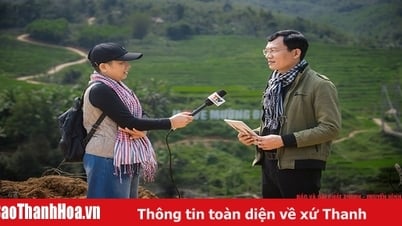

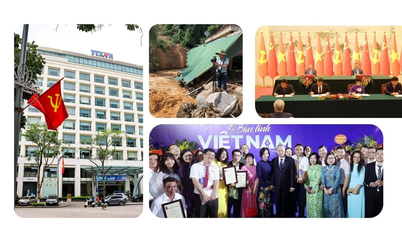

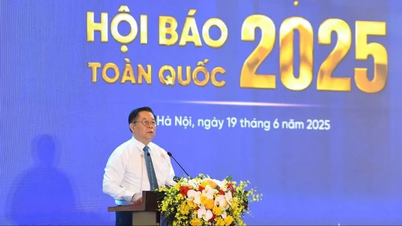

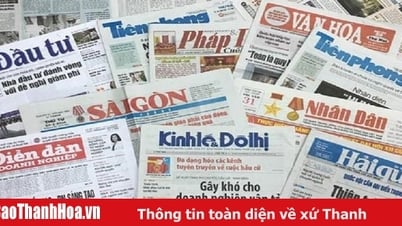


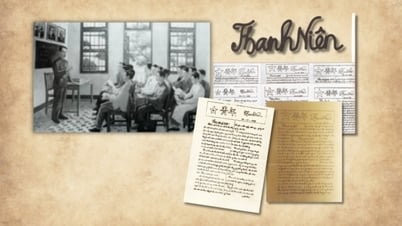

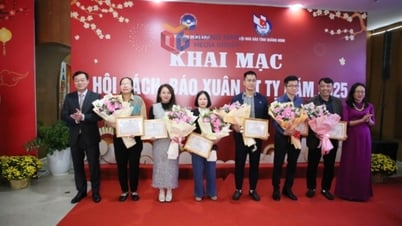

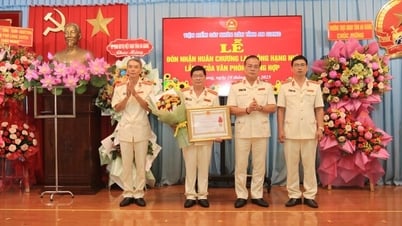

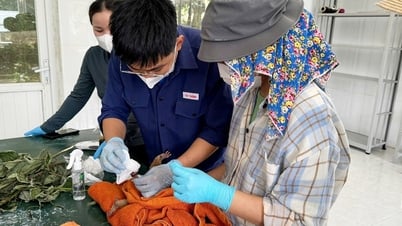

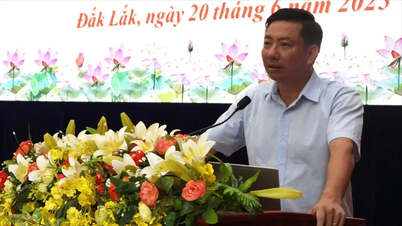
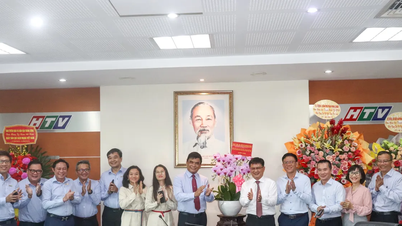
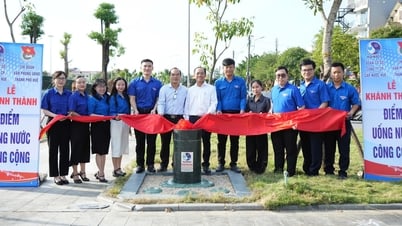




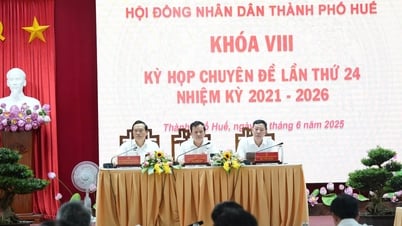
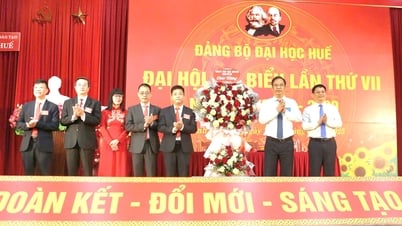
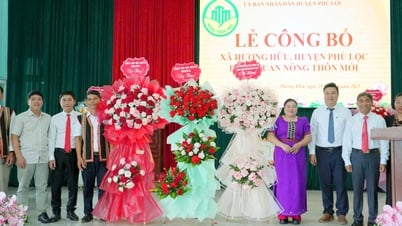
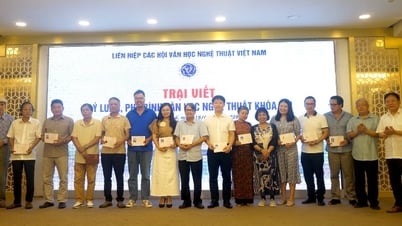




























![[Maritime News] Wan Hai Lines invests $150 million to buy 48,000 containers](https://vphoto.vietnam.vn/thumb/402x226/vietnam/resource/IMAGE/2025/6/20/c945a62aff624b4bb5c25e67e9bcc1cb)




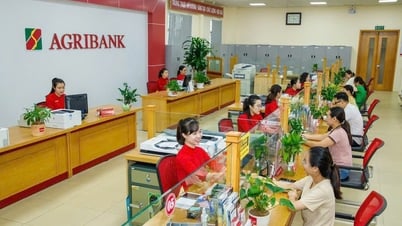
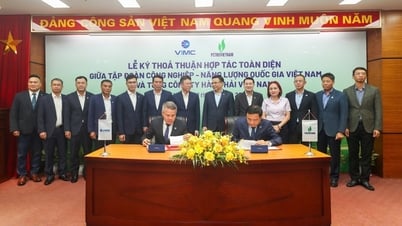








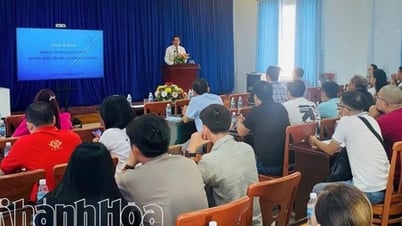



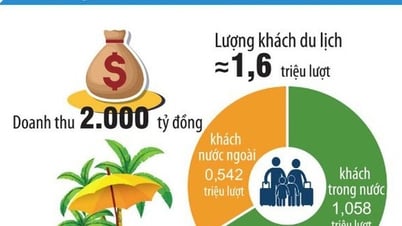
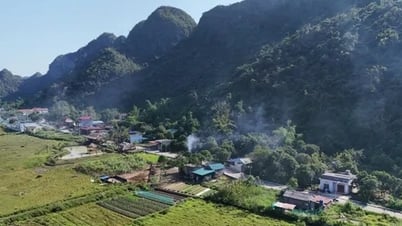
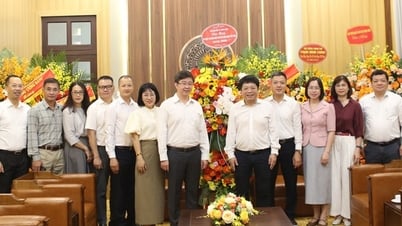

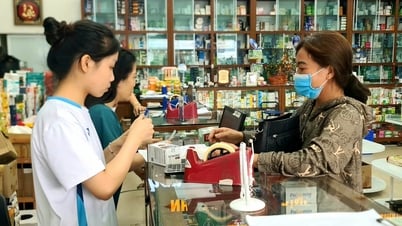


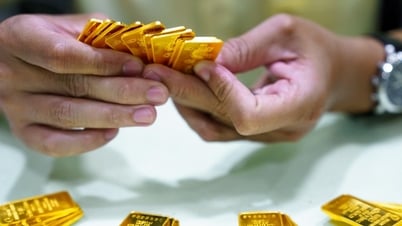


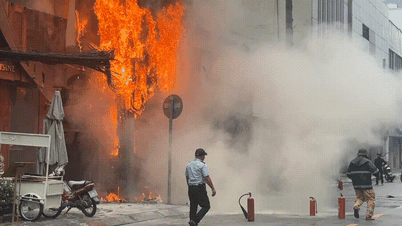
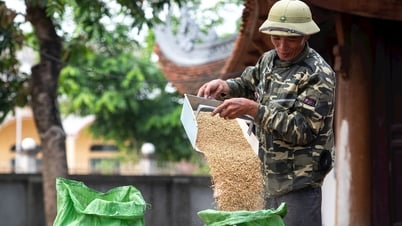











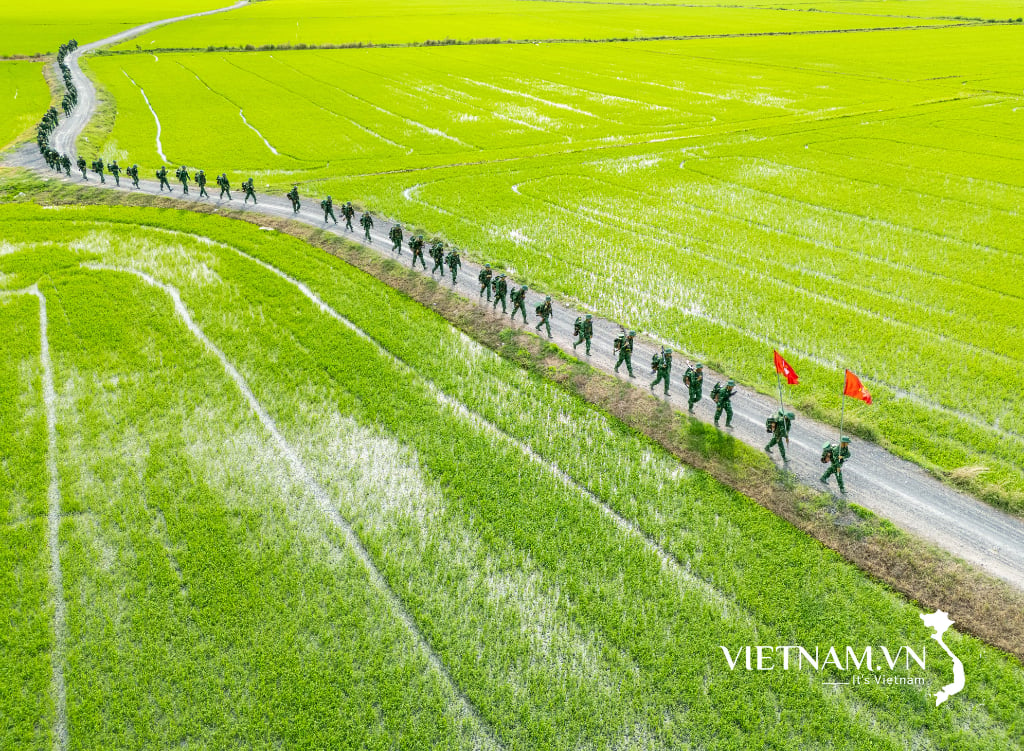
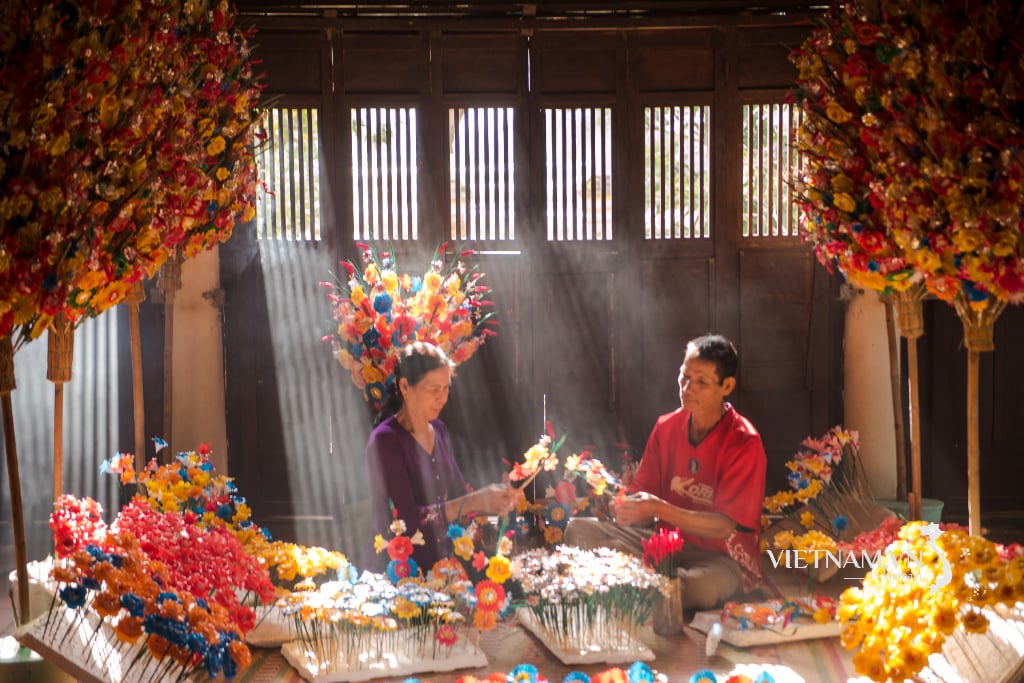

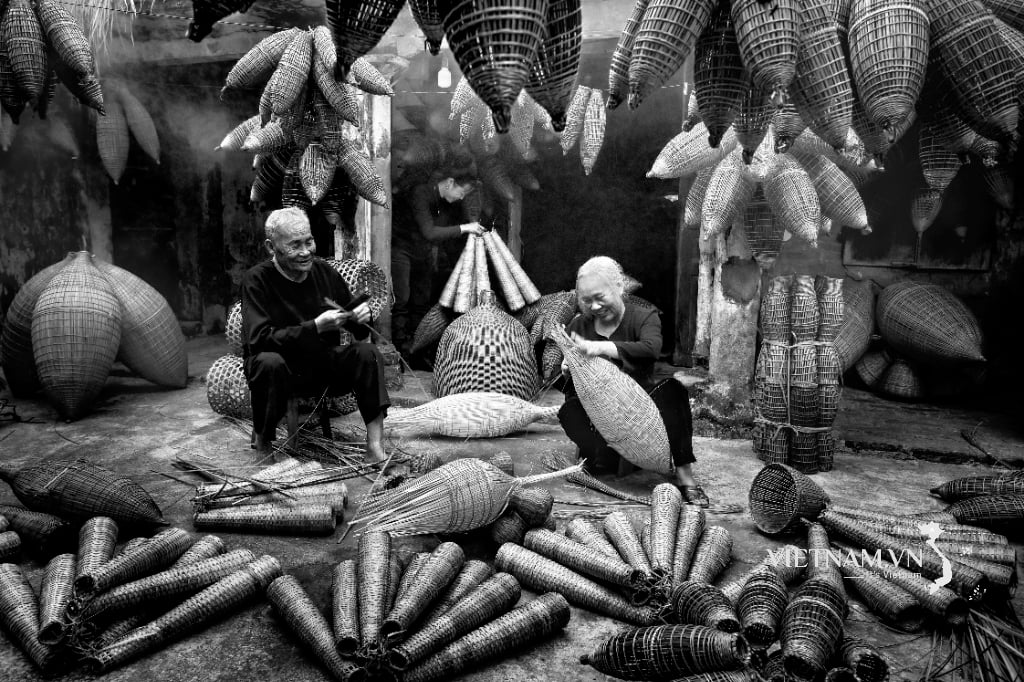
Comment (0)